A Marvelous deal

While it may be difficult to imagine now, the 1990s were a difficult time for what was then called the Marvel Entertainment Group. In 1992, a core group including seven of its most prolific artists left en masse to form the competing Image Comics. By the middle of the decade, the entire comic industry had slumped, and in 1996, Marvel Entertainment Group officially filed for Chapter 11 bankruptcy.
Marvel was in a bad place, and hastily crafted some business decisions that – in retrospect – were fairly desperate. They began selling off the film rights to their characters to whoever would take them: Men in Black and Spider-Man (to Columbia), X-Men, Fantastic Four, Daredevil, and Elektra (to 20th Century Fox), and The Hulk (to Universal)…
The shortsighted move was enough to bolster the company temporarily, even if it meant that Marvel’s most prized intellectual properties were scattered to the winds.
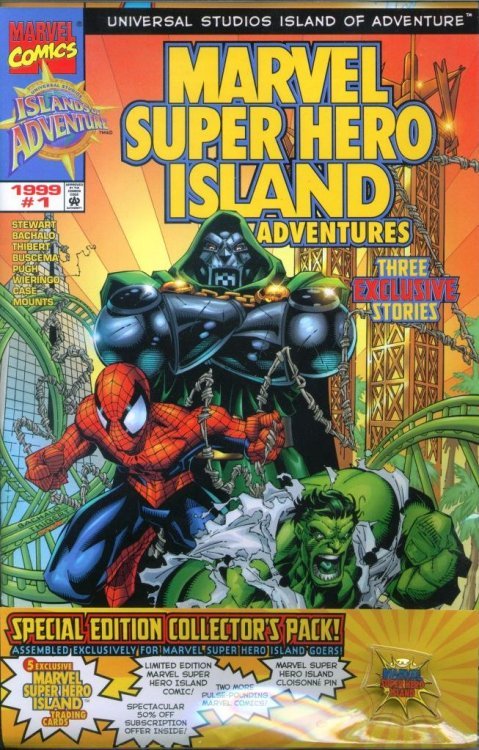
Yet another deal of the era? Marvel agreed to award Universal (then MCA) exclusive U.S. rights to build theme park lands based on the Marvel universe in perpetuity. In fact, we traced the entire, in-depth agreement (and its later ramifications) in a full Special Feature we love – AVENGERS: Custody War – that’s a must-read for industry fans.
The contract even expressly notes “no [Marvel-themed land] shall be in or marketed in conjunction with any themed entertainment areas owned, operated, or marketed by Disney, Time Warner, Six Flags, Sony, Paramount, or [SeaWorld].” Just for good measure, the contract specifically forbids any Marvel-themed land (including its characters, logos, and licenses) “within 60 miles of any Universal Theme Park with [a Marvel-themed land].” Though Universal had lost the rights to Superman and Batman before they’d even secured them, they had gained a down-on-its-luck Marvel… right before the brand’s meteoric ascent into pop culture prominence… Which meant that now, Goddard and his team needed to begin reimagining their hero attractions with The Avengers, Fantastic 4, and Spider-Man at the helm.
The Omnimover Adventures of Spider-Man
With Spider-Man now taking Superman’s place, Goddard and company devised their most unique plan yet. The first draft of The Amazing Adventures of Spider-Man they crafted used a time-tested, three-decade-old ride system in a very new way.
In fact, this early version of the ride we know used a version of Disney’s patented Omnimover (the continuously-loading chain of vehicles pioneered on Disney’s Lost Legend: Adventure Thru Inner Space, but used most famously on the Haunted Mansion and a lineup of EPCOT Center originals). The benefit of the Omnimover – which we listed among our Seven Modern Wonders of the Theme Park World – is two-fold: logistically, a high-capacity, constantly-loading ride can easily eat through crowds; creatively, the swiveling clamshell carts direct riders’ attention to exactly the spot designers want, and exactly when they want it, giving designers the real-life power of a camera.
And in the case of this Spider-Man ride, that would be important, because Goddard wanted to incorporate something wild: these Omnimovers would pass through physical, built-out sets that would be “extended” by 3D screens where action could take place.
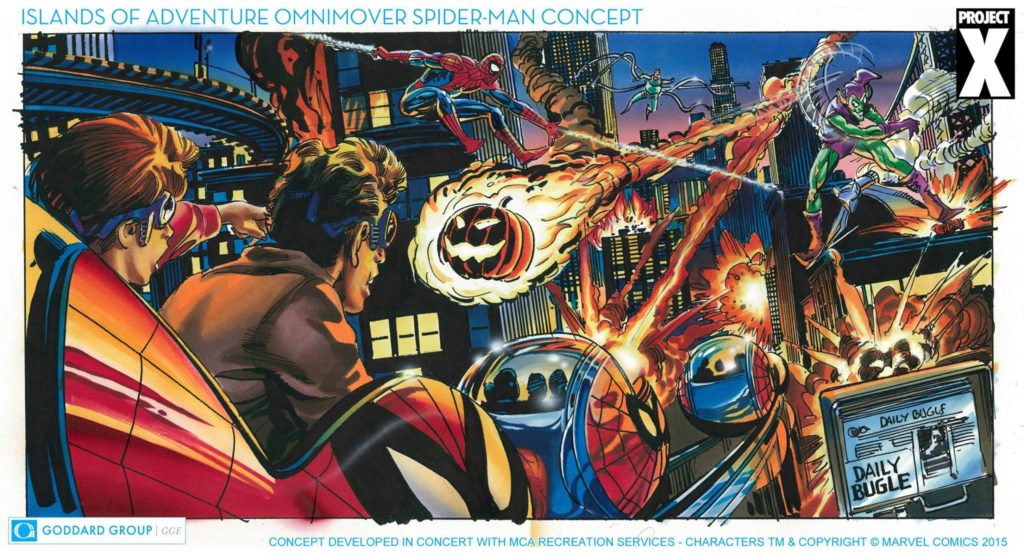
The Omnimovers, then, could rotate “into the 3D focal range,” becoming part of the looping action at just the right moment. See, no one had ever developed a 3D/4D ride before. Sure, guests had been thrilled by 3D movies for decades, including Disney’s fabled Captain EO and Universal’s own Terminator 2: 3D (developed by Goddard, mind you), but the concept of having guests move past a 3D screen was novel… and invited its own complications.
Which is why, to hear Goddard say it, this Omnimover study was always a means-to-an-end: a way to get the executives to sign onto a high-capacity, low-cost ride system, in essence giving Goddard the go-ahead for a 3D ride… and permission to experiment with a better way to move guests through it. And a brand-new ride at Disneyland in California had just stunned the industry…
Breaking News
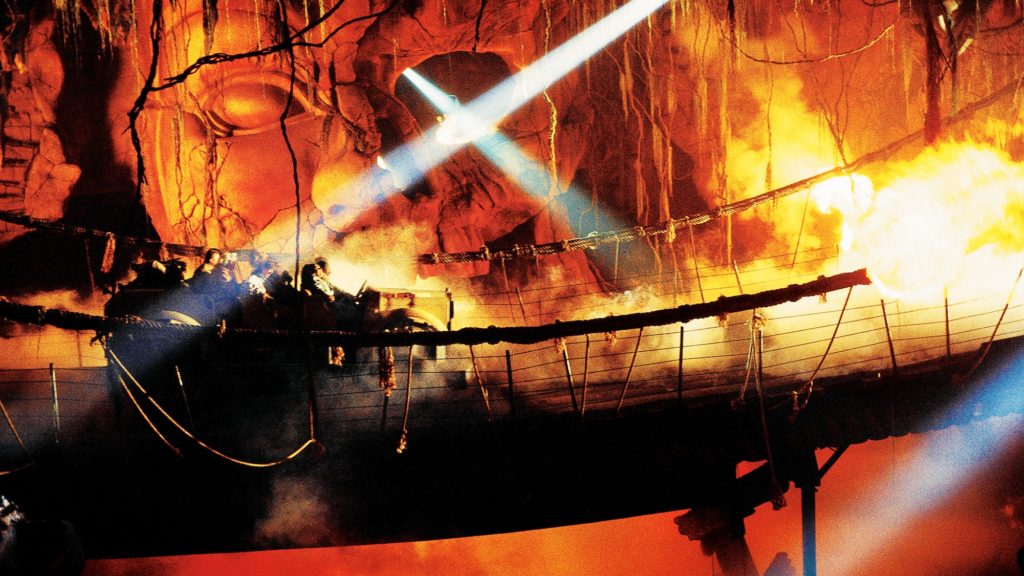
If you ask insiders, Indiana Jones Adventure: Temple of the Forbidden Eye changed everything in the themed entertainment industry. The high-energy, story-driven, special-effects packed dark ride that opened in 1995 was groundbreaking in every way, sending guests on a whirlwind tour of a cursed temple to face the wrath of Mara. Even acknowledging the unthinkable three different ride intros, the bubbling lava pits, the snakes, the spiders, the forty-foot-tall god, and Indy himself, the ride’s biggest (and most understated) star was its ride vehicle.
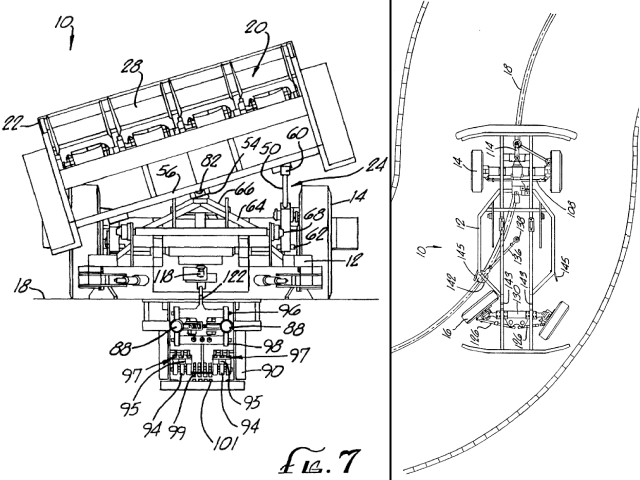
The Enhanced Motion Vehicle (or EMV) looks and feels like a regular ole’ troop transport… until it turns the corner out of the eyesight of queuing guests and becomes one of the most technologically-advanced tools in parks today. Each EMV is like a slot car, powered and guided down a track.
However, what riders are seated in is truly a motion-base platform atop the vehicle, which means that each Jeep bucks, turns, slides, shuffles, and drops to exaggerate turns, “climb” over rubble, mimic reverse motion, and rear back when accelerating. On Indiana Jones Adventure, guests weren’t merely witnessing the action; they were part of it… and even the reason for it! Unlike an Omnimover that can pass looping, atmospheric action, the EMV sent groups of guests – one at a time – into the unknown.
Backbone
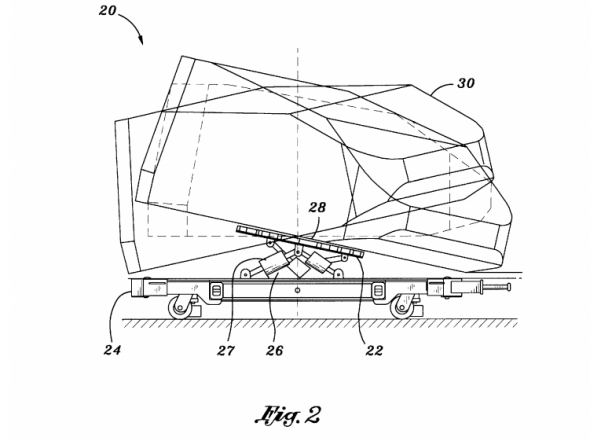
And that, if you ask insiders, pushed the forces at Universal Creative to get… well… creative. Which is why Oceaneering International (yes, a subsea engineering and applied technology company specializing in undersea ROVs and deepwater hardware) was brought in to create their own 12-passenger motion-base simulator pod capable of six degrees of freedom (heave, sway, surge, yaw, pitch, and roll) and 360-degree rotation (achieved with a ring and pinion gear system), all contained in an angled shell to direct riders’ view just like an Omnimover.
Gary Goddard – along with Universal Creative’s Philip Hettema and William Mason – received inventor credits on the ride system patent. In the Spider-Man universe, it’s cast as a newsgathering vehicle called a SCOOP. That name has stuck and become synonymous with the ride system just like “Omnimover” or “EMV” – and more to the point, the SCOOP has joined them in our list of the Seven Modern Wonders of the Theme Park World!
Because most unthinkable of all, this motion-simulator would then be placed on a track, powered through a showbuilding to buck, rumble, spin, and slalom through physical sets. Universal Creative’s Scott Trowbridge and Thierry Coup storyboarded a scene-by-scene breakdown of the new version of the ride while an outside firm animated the stereoscopic film that would be projected throughout the ride’s scenes. Altogether, 13 30-foot tall projection screens would be dotted throughout the ride, integrated perfectly within physical sets.
However, this wasn’t your typical 3D theme park film. Because guests would be moving toward, away from, or past these 3D screens, animators had to consider the perspective shift that viewers would naturally encounter if these really were alleys, warehouses, and rooftops. Ultimately, they developed a never-before-used process they called “squinching” – meticulously accounting for a viewer’s moving sightline and effectively distorting the animation to match – seen in the video below:
In other words, to stand still and view a scene of, say, a hallway, it would appear that the hallway was stretching, then sliding, then squashing, then stretching again. But perfectly paced with the moving ride vehicle, the “squinched” animation aligns perfectly to rider’s moving perspective, making the film appear like a true extension of the scene.
That required that a point-of-view and ride path were nailed down from the ride’s earliest concepts, so Universal Creative built a 20 by 26 foot scale model (1-inch : 1-foot), hoisted high with the ride’s track cut-out so that designers could walk through the ride building with their heads taking place of the ride vehicles – a plan borrowed from Walt Disney and his final walkthroughs of the model for Pirates of the Caribbean.

In order to avoid the opening year embarrassments that had plagued Universal’s Lost Legends: Kongfrontation and JAWS, Universal Creative began testing elements of the Spider-Man concept inside a warehouse in Buffalo, New York in 1996. And as a result of their hard work, The Amazing Adventures of Spider-Man was ready to go when Universal’s Islands of Adventure began technical rehearsal previews on March 27, 1999.
On the next page, we’ll board a SCOOP and take off on the most dangerous night of our lives! Read on…




